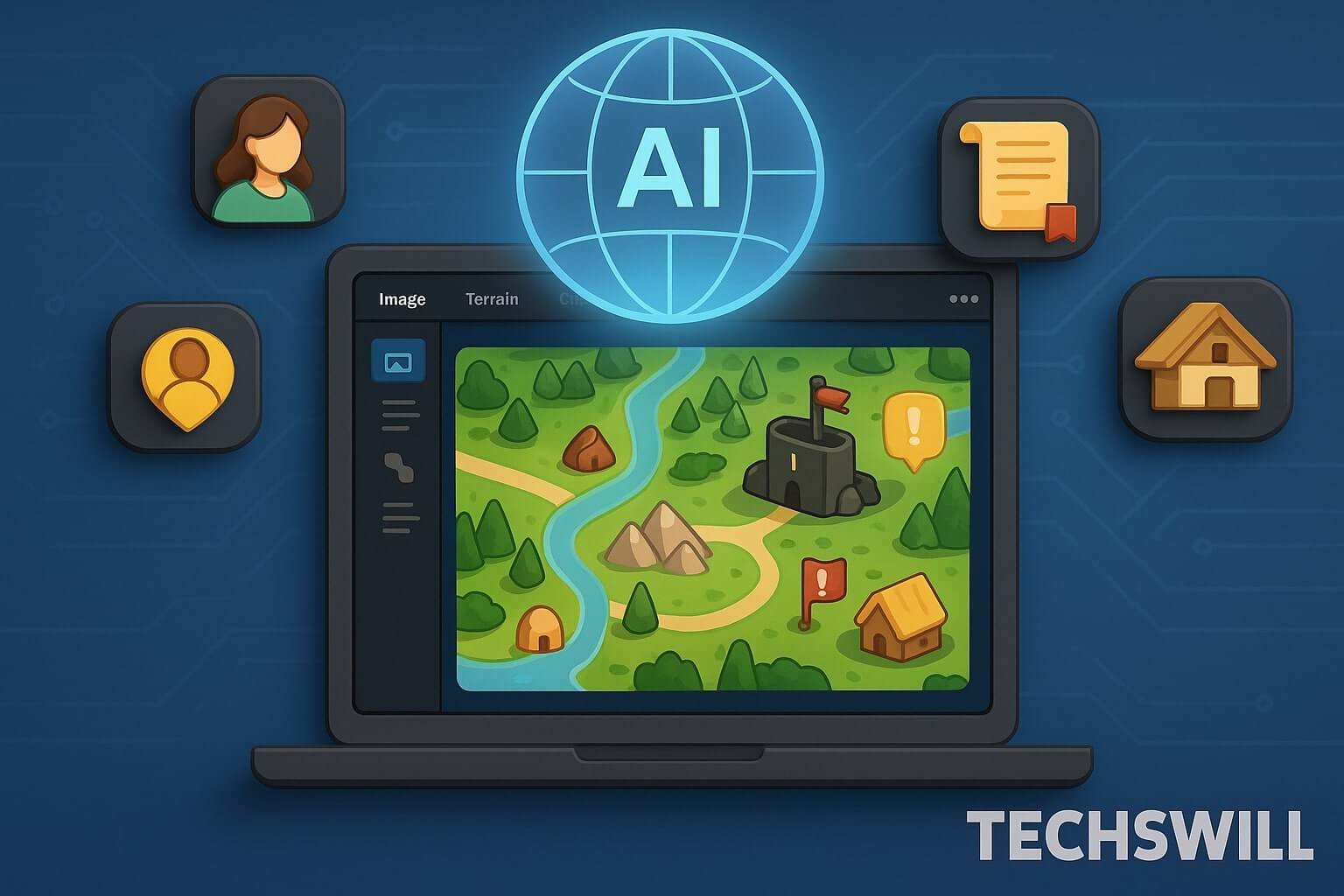Imagine describing your game’s setting in a single sentence — and watching a detailed, explorable world take shape before your eyes. In 2025, Generative AI (GenAI) is getting close to making this a reality for developers, designers, and solo creators alike.
From terrain layout to NPC backstories, GenAI tools now help construct rich, living worlds — saving time, fueling creativity, and enabling teams to focus on what matters most: gameplay, polish, and player experience.
🌍 What Can GenAI Actually Build?
While GenAI isn’t a total replacement for designers, it can now generate the raw materials and foundational logic that power game worlds. Here’s what’s currently possible:
- Procedural terrain & biomes – forests, mountains, deserts, layered topography
- Questlines & narratives – branching story arcs based on input themes
- NPCs & civilizations – backstories, names, relationships, jobs, inventory
- Settlement & dungeon layouts – with door placement, enemy spawns, and puzzles
GenAI excels at world seeding — providing a structured first draft of locations, lore, and systems you can refine.
🛠️ Tools for GenAI Worldbuilding
1. Inworld AI
Create NPCs with personality, memory, and emotion. Feed it a setting (e.g. “elven warrior in a corrupt forest kingdom”) and get back dialogue trees and motivation logic ready for integration.
2. Ludo.ai
Best for brainstorming — generate lore, items, and mission structures. It can also remix existing world structures based on design goals.
3. Scenario.gg + Leonardo.Ai
Generate environmental art, mood boards, and tile-based terrain art based on your world theme. Train it with your own visual style.
4. Promethean AI
For 3D environments — describe what you want, and it builds a blockout or populates a scene using Unreal or Unity assets.
🧠 What It Can’t (Yet) Replace
- ⚠️ Moment-to-moment level pacing – GenAI can lay out a dungeon, but it doesn’t know when tension needs to rise or when to give players a breather
- ⚠️ Fine-tuned quest logic – it may suggest side missions, but it won’t validate edge cases, checkpoints, or event flags without human QA
- ⚠️ World cohesion – you still need lore consistency, biome transitions, and thematic alignment
In short: GenAI builds volume and variation. Designers add intent and emotion.
🔮 Future Outlook
We’re seeing studios build internal pipelines like:
- Prompt → world generation → graybox export
- Auto-lore → NPC seeding → location tagging
- AI editor bots → Unity placement helpers + narration overlay
The future of worldbuilding will be co-created — with AI as your collaborative cartographer, lore assistant, and dungeon architect.

